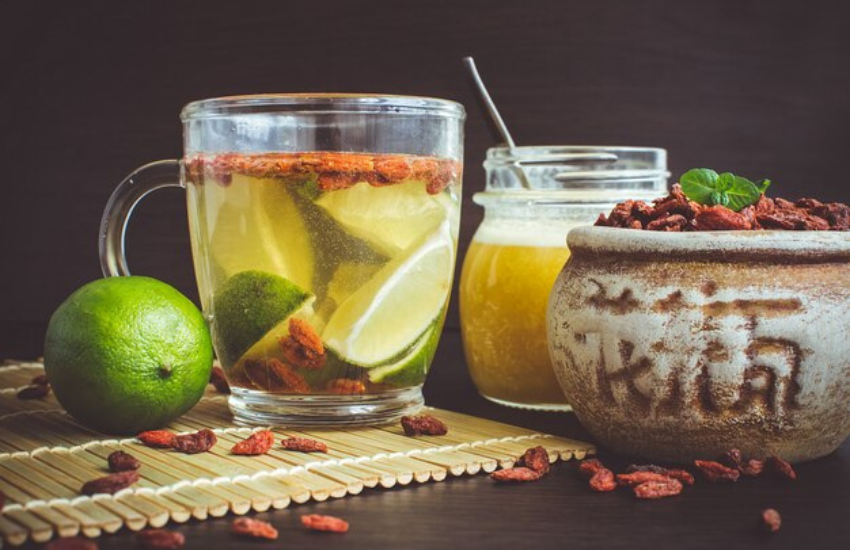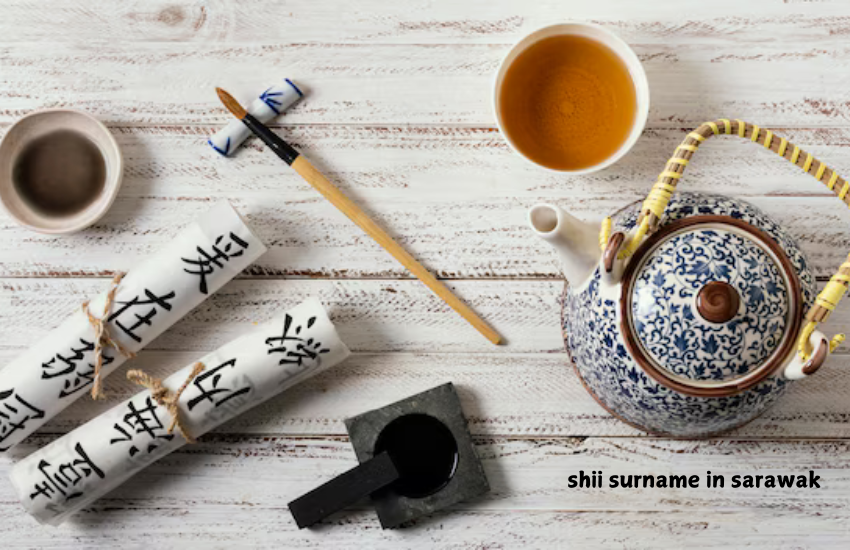Overview of Sarawak
Importance of Surnames in Cultural Identity
Surnames play a crucial role in the cultural identity and heritage of a community. They carry historical significance, reflect familial lineage, and often denote the origins and migration patterns of families. Understanding the role of surnames helps in appreciating the cultural fabric of a society.
Brief Introduction to the Shii Surname
The Shii surname, though less commonly known globally, holds a significant place within the context of Sarawak. This surname encapsulates a blend of historical migration, cultural integration, and the preservation of unique traditions.
Historical Background
Origins of the Shii Surname
The shii surname in sarawak is believed to have ancient origins, potentially tracing back to certain regions in China. Historical records suggest that families with the Shii surname migrated to Southeast Asia during various waves of migration, seeking new opportunities and escaping socio-political turmoil.
Migration Patterns to Sarawak
The migration of the Shii surname to Sarawak is part of a larger historical movement of Chinese communities to Borneo. These migrations occurred over centuries, influenced by trade, colonial policies, and the search for economic opportunities. The Shii families settled in various parts of Sarawak, integrating into local communities while retaining their distinct cultural heritage.
Historical Significance in Sarawak
In Sarawak, the Shii surname has become intertwined with the state’s history. Members of the Shii community have contributed to the region’s development, participating in trade, agriculture, and later, modern professions. Their presence highlights the multicultural tapestry of Sarawak’s society.
Demographic Distribution
Population Statistics
Estimating the exact population of individuals with the Shii surname in Sarawak can be challenging due to limited census data. However, community estimates and local surveys provide a general sense of their demographic distribution.
Key Regions in Sarawak with Shii Population
The Shii surname is predominantly found in urban areas such as Kuching, Sibu, and Miri, where economic opportunities are more abundant. Additionally, there are smaller communities in rural regions, maintaining agricultural traditions.
Comparison with Other Surnames in the Region
Compared to more common Chinese surnames like Wong, Lee, and Tan, the Shii surname is less prevalent. This rarity adds a layer of uniqueness and cultural specificity to the Shii community in Sarawak.
Cultural Impact
Traditional Practices and Customs
Families with the Shii surname uphold a variety of traditional practices, including ancestral worship, celebration of Chinese New Year, and other cultural festivals. These practices are often adapted to fit the multicultural context of Sarawak, blending with local customs.
Role in Community Events and Festivals
The Shii community actively participates in local events and festivals, contributing to the vibrant cultural scene in Sarawak. Their involvement showcases a blend of Chinese heritage and local traditions, fostering a sense of communal harmony.
Influence on Local Cuisine and Clothing
The Shii surname’s influence extends to local cuisine, with families maintaining traditional recipes passed down through generations. Similarly, traditional Chinese attire is often worn during significant cultural celebrations, reflecting their heritage.
Notable Individuals
Prominent Figures with the Shii Surname
Several individuals bearing the Shii surname have made significant contributions to various fields, including business, politics, and academia. Their achievements highlight the community’s impact on Sarawak’s development.
Contributions to Local Society and Beyond
Members of the Shii community have been instrumental in local development projects, educational initiatives, and cultural preservation efforts. Their contributions extend beyond Sarawak, influencing broader Malaysian society.
Shii Families in Public Service and Business
The presence of Shii individuals in public service roles and business leadership positions underscores the community’s integration into Sarawak’s socio-economic fabric. Their leadership helps drive local progress and innovation.
Linguistic Aspects
Etymology of the Shii Surname
The Shii surname has rich linguistic roots, with its etymology linked to ancient Chinese characters. Understanding the meaning behind the surname provides insight into the family’s historical roles and societal contributions.
Variations and Spellings
There are several variations and spellings of the Shii surname, influenced by regional dialects and transliteration practices. Common variations include Shi, Shee, and See, each reflecting a different aspect of linguistic adaptation.
Common Mispronunciations and Corrections
Due to its unique spelling, the Shii surname is often mispronounced. Educating others on the correct pronunciation helps in preserving the surname’s authenticity and respecting its cultural significance.

Genealogical Studies
Tracing Ancestry and Family Trees
Tracing the ancestry of Shii families involves meticulous research, often requiring access to historical records, oral histories, and genealogical databases. Family trees help map out the lineage and connections within the community.
Resources for Genealogical Research
Various resources are available for those interested in genealogical research, including local archives, online databases, and community organizations. These resources provide valuable information for constructing detailed family histories.
Challenges in Documenting Lineage
Documenting the lineage of Shii families can be challenging due to gaps in historical records, migration, and intermarriage. Overcoming these challenges requires collaborative efforts and the use of modern technology.
Integration into Modern Society
Education and Employment Trends
The Shii community places a strong emphasis on education, with many members achieving higher education and professional success. Employment trends show a presence in diverse sectors, reflecting adaptability and ambition.
Socioeconomic Status
The socioeconomic status of Shii families in Sarawak varies, with many achieving middle to upper-class standing through education and entrepreneurial efforts. This upward mobility highlights the community’s resilience and resourcefulness.
Integration with Other Ethnic Groups
Integration with other ethnic groups in Sarawak is evident in social interactions, intermarriages, and collaborative community projects. This integration fosters mutual respect and cultural exchange.
Preservation of Heritage
Efforts to Preserve Cultural Heritage
The Shii community actively works to preserve its cultural heritage through festivals, educational programs, and cultural organizations. These efforts ensure that future generations remain connected to their roots.
Role of Cultural Organizations
Cultural organizations play a crucial role in preserving and promoting the heritage of the Shii surname. They organize events, provide educational resources, and create platforms for cultural exchange.
Future Prospects and Challenges
Future prospects for the Shii community in Sarawak involve balancing tradition with modernity. Challenges include maintaining cultural relevance in a rapidly changing world and ensuring that heritage practices are passed down to younger generations.
Shii Surname and Identity
Personal Stories and Anecdotes
Personal stories and anecdotes from Shii families provide a deeper understanding of their experiences and identity. These narratives highlight the unique aspects of their cultural journey and contributions.
Identity in the Modern World
In the modern world, individuals with the Shii surname navigate their identity through a blend of traditional values and contemporary influences. This dynamic identity reflects the community’s adaptability and resilience.
Balancing Tradition and Modernity
Balancing tradition and modernity is a continuous process for the Shii community. Embracing technological advancements while preserving cultural practices ensures that the Shii heritage remains vibrant and relevant.
Community Networks
Social and Cultural Networks
Social and cultural networks within the Shii community provide support and foster a sense of belonging. These networks facilitate the exchange of ideas, resources, and cultural practices.
Role of Social Media and Technology
Social media and technology play a significant role in connecting Shii individuals and preserving their cultural heritage. Online platforms enable the sharing of cultural content and strengthen community bonds.
Community Support Systems
Community support systems, including family associations and cultural groups, offer assistance in times of need and promote communal harmony. These systems are vital for maintaining a cohesive and supportive community.
Intermarriage and Its Effects
Patterns of Intermarriage
Intermarriage patterns within the Shii community reflect broader social trends in Sarawak. These marriages often result in cultural exchange and the blending of traditions, enriching the cultural landscape.
Cultural Exchange and Adaptation
Intermarriage facilitates cultural exchange and adaptation, allowing families to integrate diverse traditions into their daily lives. This exchange contributes to the dynamic and inclusive nature of Sarawak’s society.
Impact on Future Generations
The impact of intermarriage on future generations includes a richer cultural heritage and a broader understanding of diverse traditions. These generations are better equipped to navigate a multicultural world.
Challenges and Opportunities
Addressing Stereotypes and Misconceptions
Addressing stereotypes and misconceptions about the Shii community involves education and awareness efforts. Highlighting the community’s contributions and cultural significance helps combat negative perceptions.
Opportunities for Youth Engagement
Engaging the youth in cultural activities and educational programs ensures the continuity of the Shii heritage. Opportunities for youth engagement include cultural workshops, language classes, and community service projects.
Potential for Economic and Cultural Development
The Shii community has the potential for significant economic and cultural development. By leveraging their cultural heritage and entrepreneurial spirit, they can contribute to Sarawak’s growth and prosperity.
Comparative Analysis
Comparison with Other Surnames in Sarawak
Comparing the Shii surname with other Chinese surnames in Sarawak provides insights into demographic trends, cultural practices, and community dynamics. This comparison highlights the unique aspects of the Shii heritage.
Comparative Study with Other Ethnic Groups
A comparative study with other ethnic groups in Sarawak reveals commonalities and differences in cultural practices, migration patterns, and social integration. These comparisons enhance our understanding of Sarawak’s multicultural society.
Lessons Learned from Other Communities’ Experiences
Learning from the experiences of other communities can provide valuable lessons for the Shii community. These lessons include strategies for cultural preservation, community engagement, and overcoming challenges.
Conclusion
Summary of Key Points
The Shii surname in Sarawak represents a rich cultural heritage, marked by historical migrations, community contributions, and cultural integration. This exploration provides a comprehensive understanding of their unique identity and legacy.
Reflections on the Shii Surname in Sarawak
Reflecting on the Shii surname highlights the importance of preserving cultural heritage while adapting to modernity. The community’s resilience and adaptability serve as an inspiration for future generations.
Final Thoughts on Cultural Preservation and Progress
Cultural preservation and progress are intertwined goals for the Shii community. By embracing their heritage and looking towards the future, they can continue to thrive and contribute to Sarawak’s multicultural society.
FAQs
16.1 What is the origin of the Shii surname?
The Shii surname is believed to have origins in ancient China, with historical migrations bringing it to Southeast Asia, including Sarawak.
16.2 How many people with the Shii surname live in Sarawak?
While exact numbers are difficult to determine, the Shii community in Sarawak is relatively small but significant, primarily concentrated in urban areas.
16.3 What are some notable contributions of the Shii community in Sarawak?
The Shii community has contributed to various fields, including business, education, and public service, playing a vital role in Sarawak’s development.
16.4 How does the Shii surname influence cultural practices in Sarawak?
The Shii surname influences cultural practices through the preservation of traditional customs, participation in community events, and the promotion of cultural heritage.
16.5 What are the challenges faced by the Shii community?
Challenges include maintaining cultural relevance, addressing stereotypes, and ensuring the transmission of heritage to younger generations.
16.6 How can one trace their Shii ancestry?
Tracing Shii ancestry involves researching historical records, utilizing genealogical databases, and connecting with community organizations dedicated to preserving family histories.


